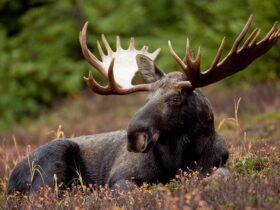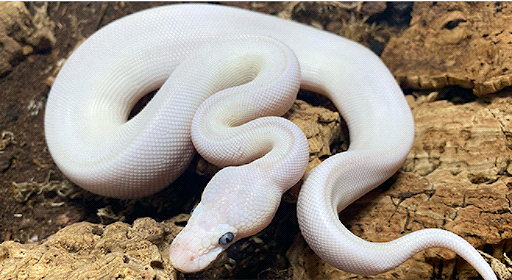Adaptations and survival are integral components of evolution. For animals, the key to thriving in their environments is to have the right characteristics to suit their needs. These traits can come in the form of physiological, behavioral, or anatomical adaptations that enable them to cope with changes in their surroundings. The ability to survive and pass on favorable genes has allowed for evolutionary success, which is why understanding the role of animal parts in adaptation and survival is essential for scientists studying evolution.
In this blog post, we will delve into the world of animal adaptations and explore the intricacies of various animal parts and their roles in the survival of species. From birds’ beaks to reptiles’ scales, we will examine how parts of an animal, certain traits, and abilities have allowed species to thrive in their environments by adapting to various challenges. Additionally, we will explore some of the ways animals have evolved over time and how this knowledge can help us better understand the natural world around us.
The Importance of Adaptation and Survival in Evolutionary Success
Adaptation and survival are critical components of evolutionary success, as species that are better able to adapt to their environment and survive are more likely to pass on their genes to the next generation. In the animal kingdom, physical and behavioral adaptations play a pivotal role in allowing individuals to survive and thrive in their respective environments.
From the fangs of venomous snakes to the swiftness of cheetahs, the unique features of various animal parts have evolved over millions of years to enable optimal survival and reproduction. Understanding the mechanisms behind these adaptations and the ways in which they contribute to evolutionary success can shed light on the dynamic and complex nature of life on Earth.
Importance of Conservation and Preservation
One of the key themes central to the study of evolutionary biology is adaptation and survival. Throughout the eons, organisms have evolved a wide range of physical structures and traits that have allowed them to survive in their respective environments. Among these adaptations, however, the importance of the conservation and preservation of animal parts cannot be overstated. To survive in their natural habitats, animals must carefully allocate their resources and maintain a delicate balance between growth and energy consumption.
The efficiency of an animal’s body parts and systems plays a critical role in regulating this balance and ensuring that the organism can survive and thrive. By conserving energy and resources, animals are able to optimize their chances of success in a highly competitive and rapidly changing world. In light of the many challenges modern ecosystems face, the importance of conservation and preservation of animal parts continues to be a vital area of research and study for biologists and environmentalists alike.
Adaptations as a Result of Natural Selection
Natural selection has long been recognized as the primary mechanism driving evolutionary change in living organisms. One of the most important outcomes of natural selection is the process of adaptation, whereby traits that enhance an organism’s survival and reproductive success become increasingly common in a population over time. Adaptations can manifest in a variety of different ways, including changes in morphology, physiology, behavior, and even genetics.
From the development of specialized organs like wings for flight or fins for swimming to the evolution of new defense mechanisms like camouflage or venom, adaptations provide animals with the tools they need to thrive in a constantly changing and competitive environment. As such, understanding the mechanisms that underlie adaptation is key to understanding the evolution of life on Earth.
How Animal Parts Contribute to Survival
The role of animal parts in enabling species to survive and reproduce is essential. From the feathers of birds that help them to fly to the claws of cats that allow them to hunt, each part serves an important purpose in allowing animals to thrive in their respective environments. By studying the various adaptations found among different species, we can gain valuable insight into the ways in which animals have adapted to their environments and evolved over time.
- One way is through the role that teeth and beaks play in obtaining food.
- Another is through the use of camouflage and protective coloring to evade predators or prey. Animals also use their limbs and appendages for a variety of purposes, such as propulsion, grasping, digging, or flying.
- Lastly, many animals have developed behavioral adaptations, such as hibernation, migration, or communication, which allow them to effectively navigate their environment and interact with other species.
With this knowledge, we can appreciate how animal parts have evolved to effectively facilitate survival and better understand the complexities of the natural world.
Examples of Evolutionary Success With Animal Parts
Perhaps one of the best examples of evolutionary success with animal parts is seen in bats. These small, nocturnal animals have developed specialized wings from their forelimbs that allow them to fly and capture prey with ease. By utilizing their unique anatomy and physiology, bats have been able to outcompete other species for resources and adapt to a wide range of environments.
Another example can be seen in the cheetah, a swift and powerful predator that has evolved to capitalize on its speed and agility. The long legs, tails, and claws of this species help it move quickly over short distances when hunting prey. Additionally, the spotted coat provides camouflage for stalking prey or blending into the savanna landscape.
These are just a few examples of how animal parts have allowed species to thrive and survive in an ever-changing world. By studying these adaptations, biologists can gain greater insight into the process of evolution, which is crucial for understanding the complexity of life on Earth.
In Conclusion
The role of animal parts in evolutionary success is multifaceted, with each adaptation playing a vital part in an animal’s survival. Whether for protection, locomotion, sensory perception, or other functions, animals have developed a wide range of physical and behavioral adaptations to ensure their success in their respective environments. While these adaptations have enabled certain species to dominate and thrive, it’s important to remember that the survival of every species is interconnected, and changes to one can have a significant impact on the entire ecosystem. As such, understanding the role of animal adaptations in evolution is essential for conservation and the continued, sustainable success of all animals.





